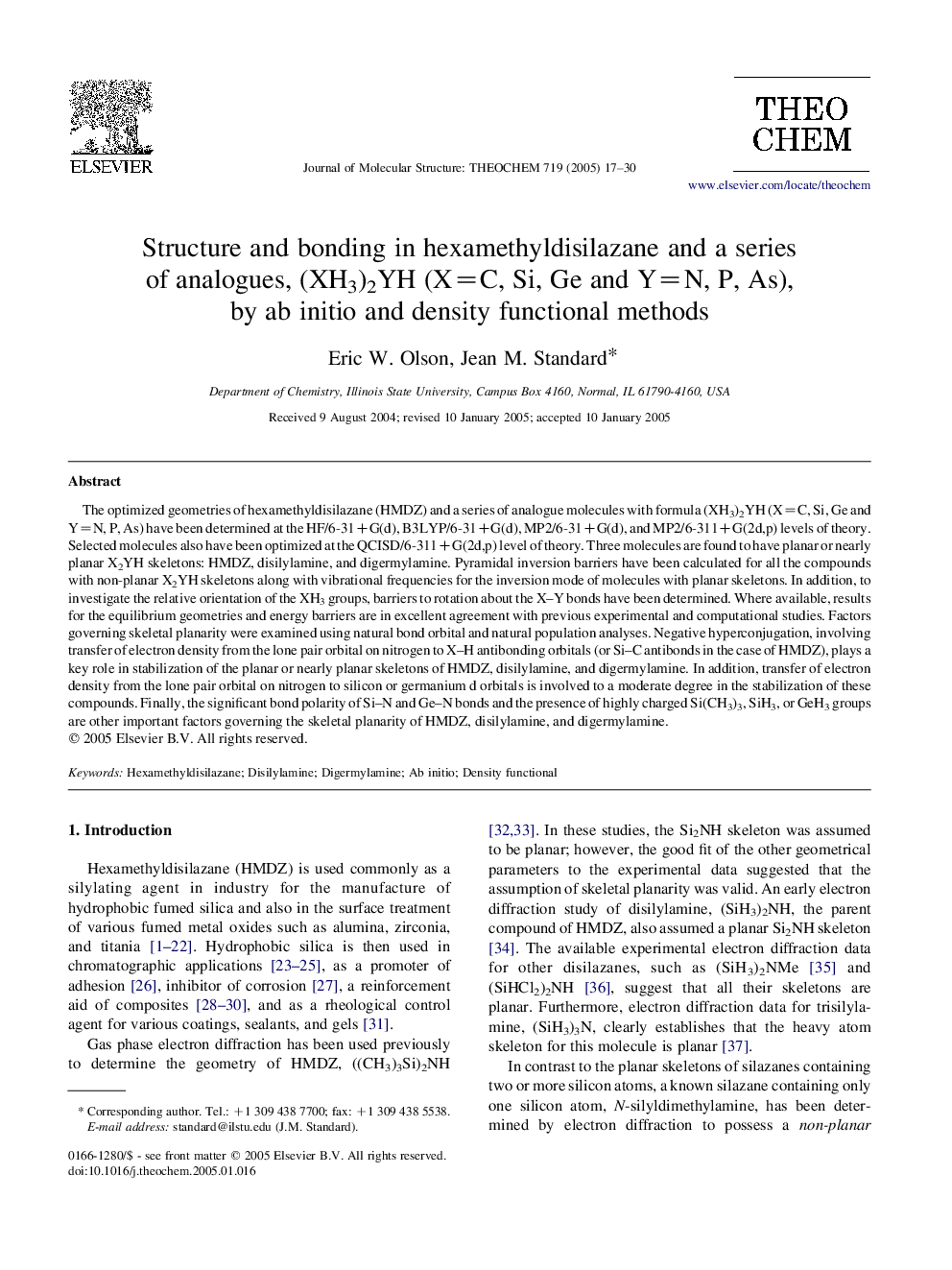| Article ID | Journal | Published Year | Pages | File Type |
|---|---|---|---|---|
| 9591817 | Journal of Molecular Structure: THEOCHEM | 2005 | 14 Pages |
Abstract
The optimized geometries of hexamethyldisilazane (HMDZ) and a series of analogue molecules with formula (XH3)2YH (X=C, Si, Ge and Y=N, P, As) have been determined at the HF/6-31+G(d), B3LYP/6-31+G(d), MP2/6-31+G(d), and MP2/6-311+G(2d,p) levels of theory. Selected molecules also have been optimized at the QCISD/6-311+G(2d,p) level of theory. Three molecules are found to have planar or nearly planar X2YH skeletons: HMDZ, disilylamine, and digermylamine. Pyramidal inversion barriers have been calculated for all the compounds with non-planar X2YH skeletons along with vibrational frequencies for the inversion mode of molecules with planar skeletons. In addition, to investigate the relative orientation of the XH3 groups, barriers to rotation about the X-Y bonds have been determined. Where available, results for the equilibrium geometries and energy barriers are in excellent agreement with previous experimental and computational studies. Factors governing skeletal planarity were examined using natural bond orbital and natural population analyses. Negative hyperconjugation, involving transfer of electron density from the lone pair orbital on nitrogen to X-H antibonding orbitals (or Si-C antibonds in the case of HMDZ), plays a key role in stabilization of the planar or nearly planar skeletons of HMDZ, disilylamine, and digermylamine. In addition, transfer of electron density from the lone pair orbital on nitrogen to silicon or germanium d orbitals is involved to a moderate degree in the stabilization of these compounds. Finally, the significant bond polarity of Si-N and Ge-N bonds and the presence of highly charged Si(CH3)3, SiH3, or GeH3 groups are other important factors governing the skeletal planarity of HMDZ, disilylamine, and digermylamine.
Related Topics
Physical Sciences and Engineering
Chemistry
Physical and Theoretical Chemistry
Authors
Eric W. Olson, Jean M. Standard,
